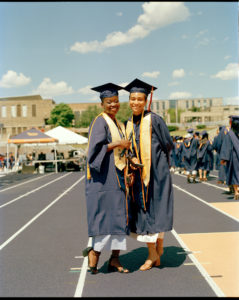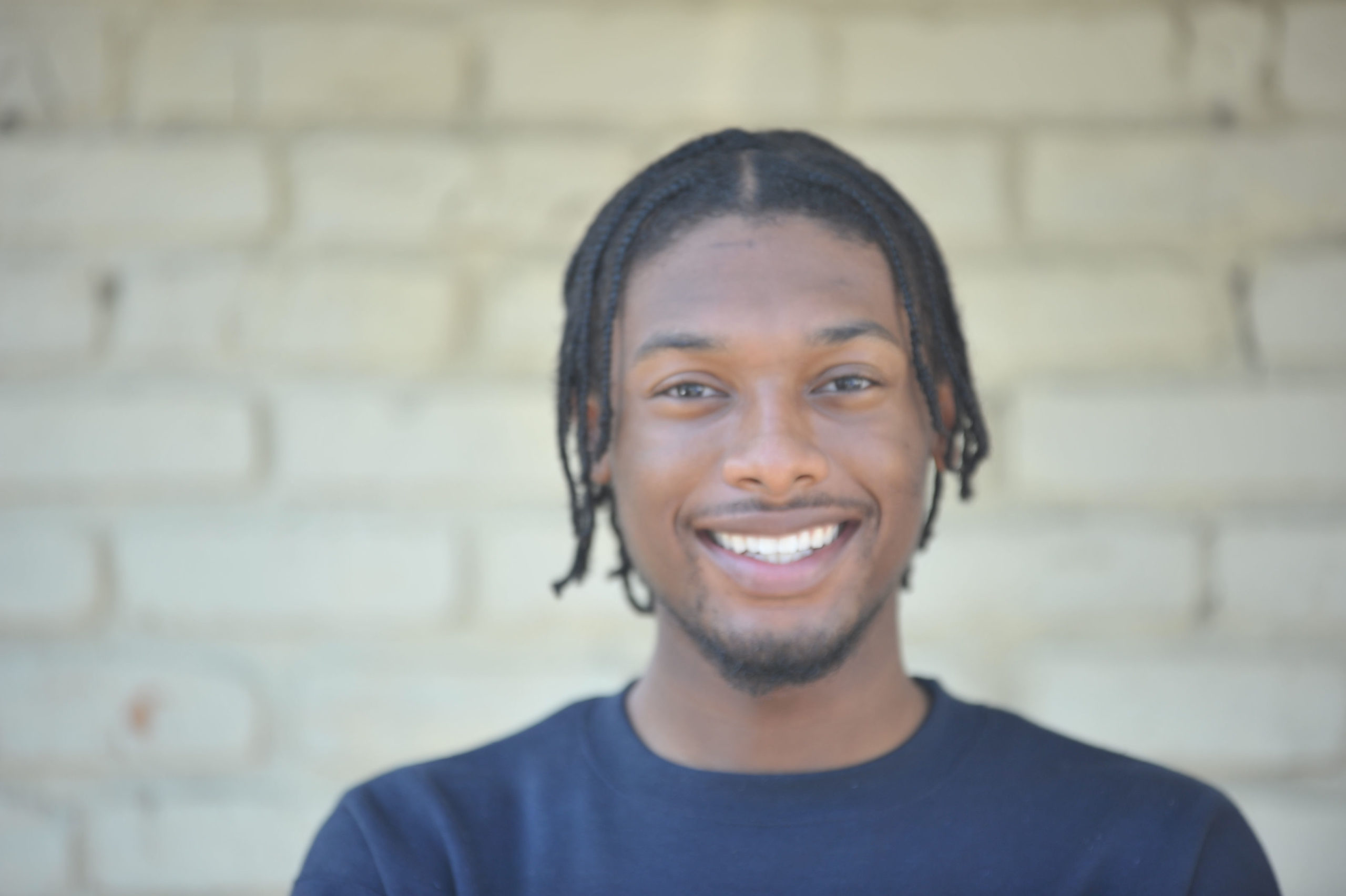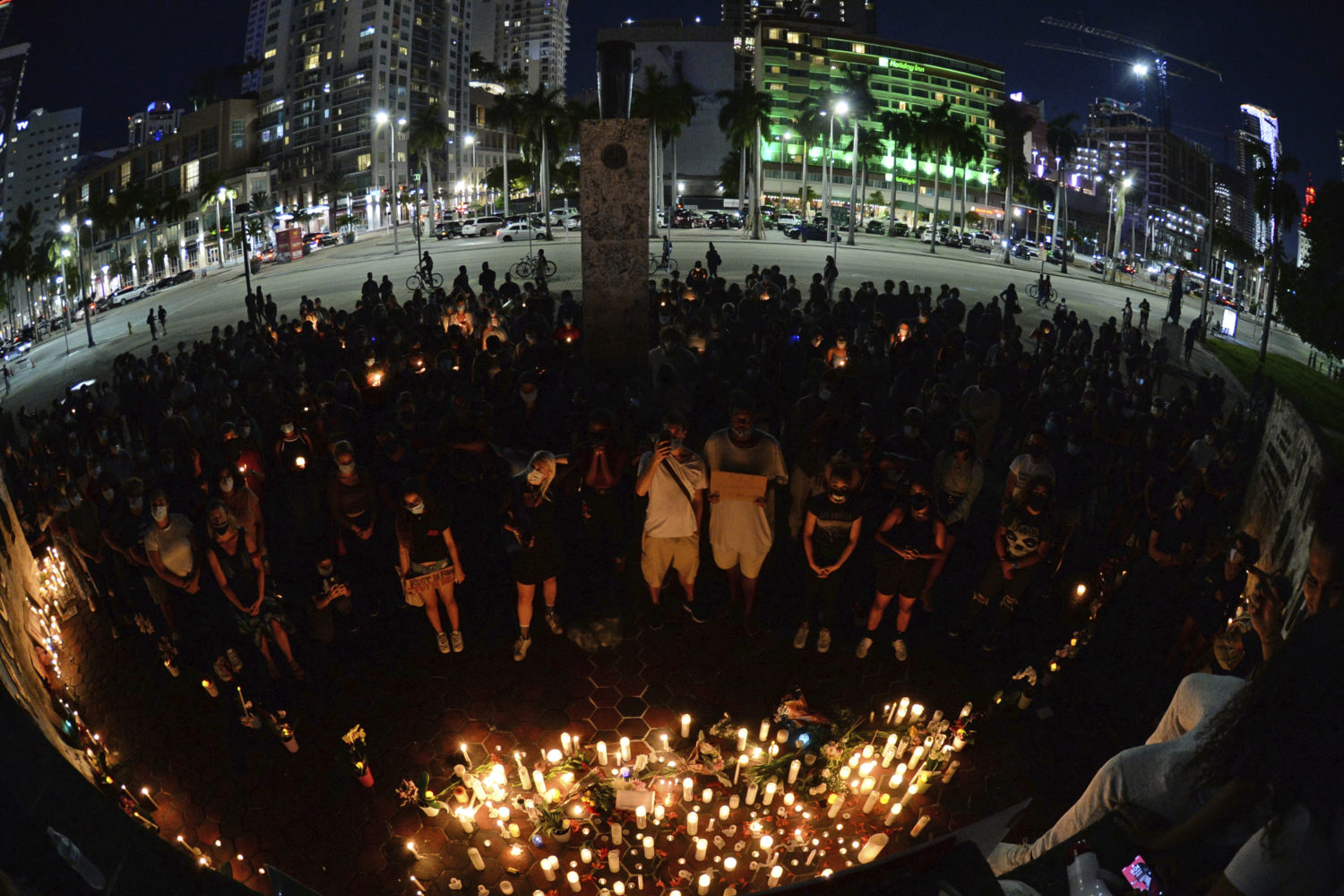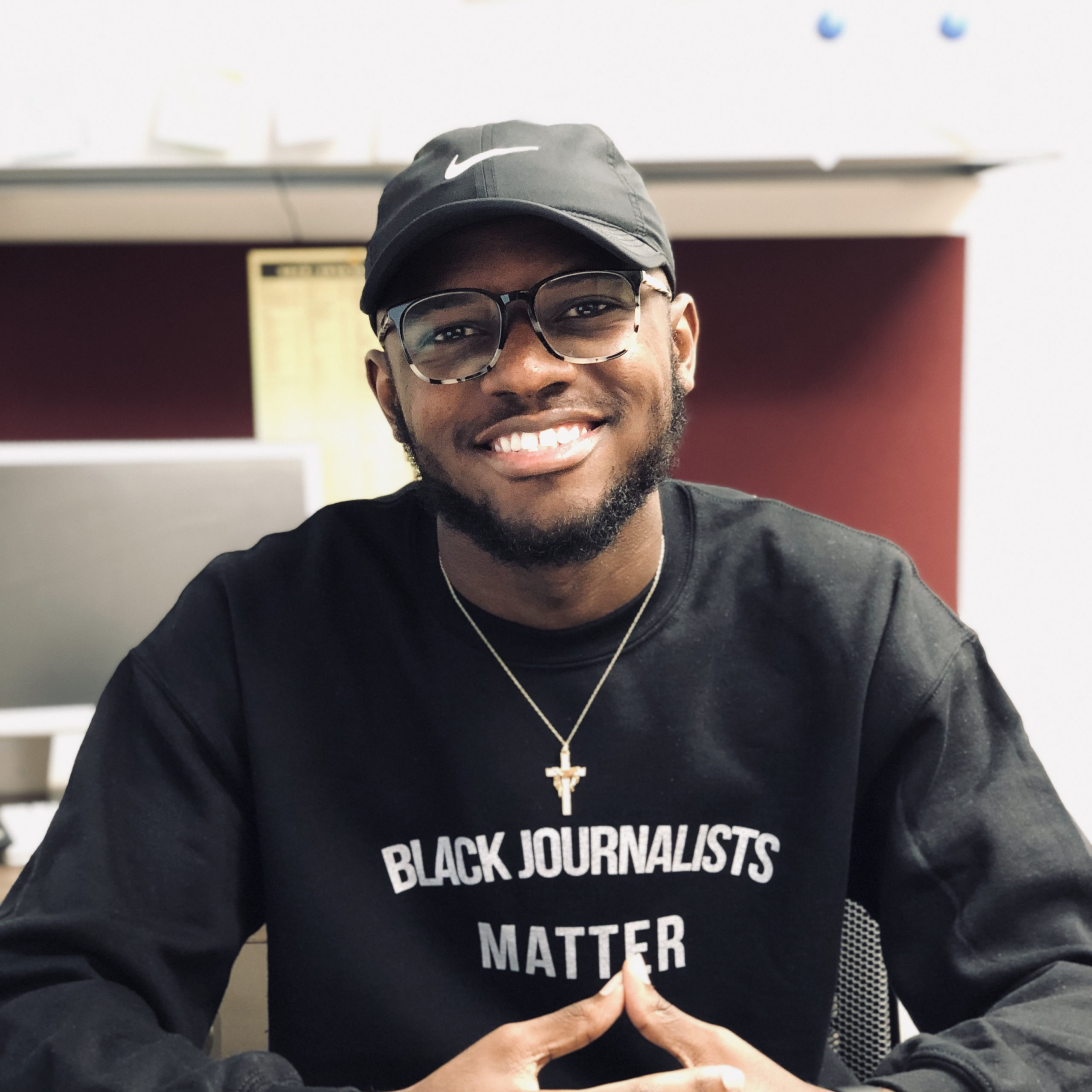For the last year, Black reporters and editors have witnessed their white colleagues read stories and watch videos about tragedies happening in Black communities, and watched as they’ve gone to social media to express their outrage.
Newsrooms, through self-evaluation, have slowly started to connect the dots. The problems within the United States’ legal system, health care and economy were present in buildings where their stories were produced.
But none of it was new or surprising to the Black journalists in those spaces, who didn’t have to watch the murder of George Floyd to realize there were issues with policing or that civil rights litigation had done little to address the subordinate status of Black Americans.
For the young journalists leading the way at historically Black colleges and universities, this last year was a learning opportunity like no other. They had to lead their newsrooms through historic protests against anti-Black racism, a health crisis that disproportionately affected them and an election with one of their own on the ballot — and not flunk out of school while doing it.
Some even had to work through the deaths of their peers and loved ones.
Even during a year filled with disaster, HBCU newsrooms were still able to produce some of their most impactful work. For Morgan State University, it’s “Black Health Matters,” a project reporting on disparities in health care. For Florida A&M University, it’s “Uncensored,” an award-winning multimedia project examining the meaning of youth and Blackness in America. For Howard University, it’s just keeping the organization afloat.
[the_ad id=”667826″]
“I don’t know if the true effects of the Freddie Gray protests hit me until literally last year,” said Oyin Adedoyin, former editor-in-chief of The Spokesman, Morgan State’s student-run news organization, referring to the Baltimore man who died in 2015 after being arrested by police for possession of a knife.
Gray, a Black man, was placed into the back of a police van, where officers failed to secure him with a seatbelt. He sustained serious neck injuries while in the van, was found unconscious and died a week later in a hospital. None of the officers involved were convicted and all were later reinstated.
“Everything kind of sunk in for me as I watched the whole country in demonstrations for George Floyd because it reinforced, for Baltimore, how deeply the community was hurt by what happened to Freddie Gray,” Adedoyin said.
HBCU newsrooms don’t often benefit from generous grants, institutional support, spacious offices or large staff. The very people they’re supposed to hold accountable — school administration and student government — are responsible for their funding. Editors are paid very little if their organizations can afford it. Most can’t afford to pay the entire staff.
But there is a strong sense of camaraderie: the relationships created, the work produced and the benefit of not having to explain one’s pain and trauma to others.
“It was really challenging,” Adedoyin said. “It really felt like everything was turning upside down. … It’s senior year, you have this whole picture of your senior year, I finally got a hand on this editor-in-chief thing. I had this whole vision of the year. Basically, it’s gonna be the best year ever.
“And this happened. … The police brutality, the racial, social justice issues that were coming up, the tensions that were existing and being at an HBCU. It felt like a magnifying glass.”
Adedoyin also faced the challenge of leading the newsroom as a Black woman. She spent the first of her two years as editor-in-chief, her junior year, working to find a “commanding voice.” She wanted an open and communicative environment, but not to the point where people didn’t take her seriously.
That made the events that happened during her senior year, when she felt like she finally grasped that voice, difficult to accept.
“I remember a meeting we were talking about how many students had passed away in a matter of weeks, and I had to turn my video off … because I was breaking down, and I didn’t want the staff to see me like that,” Adedoyin said. “But I was like, ‘OK, maybe I should talk to someone professionally and utilize the free counseling resources that the campus has while I still can,’ and it helped a lot.”
[the_ad id=”667872″]
Supporting her the entire time was her managing editor and best friend, Brianna Taylor. The two were inseparable before the pandemic started. Whatever one lacked, the other made up for it.
Adedoyin could cater to everyone’s emotions. Taylor worked to make sure the organization was pushing out multiple stories a week.

Oyin Adedoyin (left) and Brianna Taylor attend their spring commencement ceremony at Morgan State University in May 2021. (Courtesy: Jewel Champbell)
“Throughout senior year, I saw a shift where we were away from each other … everything was virtual,” Taylor said. “We hadn’t seen each other for maybe a year or so. … So I saw her grow as a person who kind of commanded respect. And on the other end, I was the person that people kind of went to, and they were like, ‘Hey, Brianna, I need this.’”
She was exhausted. As a person who strongly values her relationships, she was sad that her life was on hold.
“Then I also felt guilty because at least I wasn’t dead,” Taylor said.
“Throughout that, I had to try to maintain a GPA, my scholarship or my scholarship would get bumped, but how was I doing that when I was so depressed? I was isolated away from my friends, from Oyin.”
Taylor also couldn’t escape from her name, which she shares with the late Black woman who became a symbol of the Black Lives Matter movement after being killed by police serving a no-knock arrest warrant. She dreads when her name is called out at the doctor’s office. It’s the “worst feeling” whenever she’s asked about it.
“Having my name drawn to Breonna Taylor has made me feel very uneasy,” Taylor said. “I feel like I hold the burden of making sure that I understand what it means to have that name.”
The death of a 19-year-old activist, Oluwatoyin Salau, devastated community members in Tallahassee, Florida, who familiarized themselves with Salau at demonstrations for George Floyd and Tony McDade, a Black transgender man killed by police.
In early June 2020, Salau posted a series of tweets alerting others that she was sexually assaulted. She would later go missing. Days after her disappearance, she and another woman, Victoria Sims, were found dead. A man was subsequently arrested and confessed to raping Salau and killing the two women.
“That was very difficult all around to everyone that was in Tallahassee during that summer, last summer,” said Aiyana Ishmael, former editor-in-chief and digital content producer for Journey, FAMU’s student-run magazine. “And so to have friends that were close to her and watching them heal but also want to talk about it … it was an unfortunate situation but also very beautiful to have such camaraderie and community.”
Ishmael gave staff members time and space to cope with all that had transpired. If they didn’t feel confident in writing one week, she didn’t try to force it. If they needed another day or week, that was perfectly fine. It was important to her that they cared for themselves first.

Aiyana Ishmael poses for a photo in her office for Journey magazine at Florida A&M University. (Courtesy: FAMU School of Journalism & Graphic Communication)
When she needed a few weeks to step away from the magazine and gather herself, her team was supportive.
“I’m a journalist, but I’m a black woman first,” Ishmael said. “I can’t ever be a journalist first because the intersections of my identity are just larger than my career. … And so I always am a firm believer in giving people whatever they need, whether that is taking time off if someone on my team struggles with mental health and what they were going through.”
Donovan Thomas, former editor-in-chief of The Hilltop, Howard’s student-run news organization, also found himself trying to figure out how to best adjust to the times.
[the_ad id=”667878″]
He entered the school year with the goal of building on the paper’s legacy, which included being recognized twice as the best collegiate newspaper in the nation by The Princeton Review. His tenure started only a few years before the organization’s 100-year anniversary, and he wanted to make sure it got there.
But his year never quite turned out to be what he envisioned. He experienced a handful of family deaths throughout the academic year. His pay was cut from $600 bi-weekly to $168 due to funds lost as a result of the pandemic. He set out to publish weekly, but sometimes that didn’t happen. There were stories he wanted to do that never came to fruition.
“It wasn’t the fullest experience,” Thomas said. “I don’t think I received the fullness of actually being editor-in-chief being that we were not on campus. … I can’t see that I left a legacy in this last year.”

Donovan Thomas. (Courtesy: JWP Studio)
He did learn how resilient he is. It’s a quality present throughout HBCU newsrooms and a trait it doesn’t take long to recognize in Black communities.
“It’s rewarding in the end,” Thomas said. “Just the opportunity to tell the stories of your HBCU peers and whatnot. It’s a hard yet fulfilling job to do. And I wouldn’t trade it for anything.”
Black high school students are told about the benefits of attending predominantly white institutions. They’re painted a utopian image that shows them receiving access to the best education, dorm rooms and facilities.
But they don’t always hear about the Black students on those campuses who face constant battles with administrators, instructors and other students just to be heard. They don’t always hear about the community at an HBCU, one that might not always be in agreement but often sticks together when it comes to its own.
It’s a culture of care that spills into the newsroom under the most demanding circumstances.
“I would say that HBCU newsrooms are not to be underestimated,” Adedoyin said. “I think for a long time, people underestimated not just student media at HBCUs but the institutions themselves and their significance in this age.
“And I think that it’s been proven that they’re more important now than ever.”







